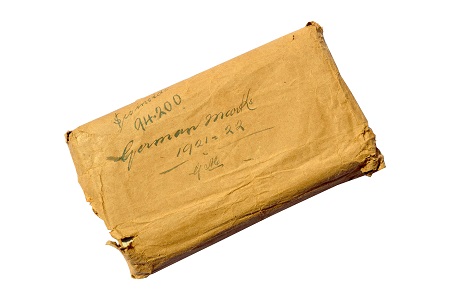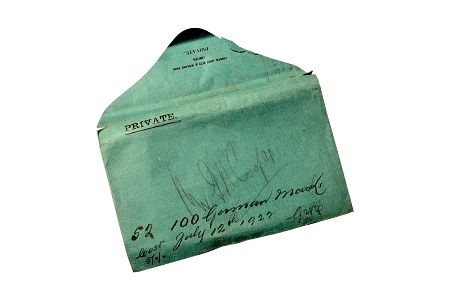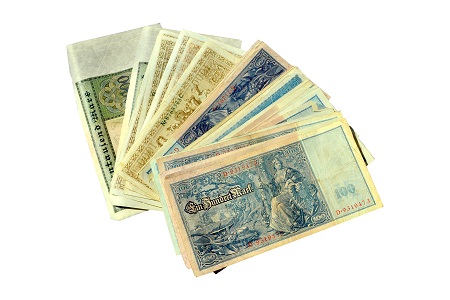The immense acceleration of prices that occurred during the years 1921–23 was a defining event in the relatively short-lived German Weimar Republic. The economic hardship and misery, which was the inevitable outcome of hyperinflation, would ultimately sow the seeds of the radical political situation which prevailed in Germany throughout the 1920s and 30s.


The German government faced a dilemma; they could not raise taxes as those very taxes would be payable in increasingly-worthless German Marks. Instead, the government resorted to running a budget deficit and printing more money. Inevitably, prices in the German home markets escalated markedly, which led to the German people rapidly spending what money they had. However, this had the effect of increasing monetary velocity in the German economy, driving up prices still higher and creating a vicious cycle which neither the government or the banks were able to control. The result was inevitable; the currency became effectively worthless, businesses failed, unemployment and poverty rocketed and Germany defaulted on its debt. The photographic images of the time graphically illustrate the real impact this debacle had on the German people, with mothers being depicted paying for a loaf of bread with a wheelbarrow full of bank notes, or families fueling their stoves with the worthless currency.

The notes which we have on display have an interesting story to them. They were given to me by my grandmother just before she died. They had been given to her in the 1930s by a local shop owner in Heath Lane, West Bromwich. He had speculatively purchased 54,000 Reichsbank Marks from his Bank (London Joint City & Midland Bank) as an investment in the hope that the German economy would recover and the value of its currency be restored. They were purchased on the 12th July 1922 at an exchange rate of £1 to 2,040 Deutsche Marks. Even at those rates, it turned out to be a poor investment. By the time inflation had been brought under control and a new currency established, the Monetary Law of 1924 permitted the exchange of each old paper 1 trillion Mark note for one new Reichsmark!

The notes which we have on display have an interesting story to them. They were given to me by my grandmother just before she died. They had been given to her in the 1930s by a local shop owner in Heath Lane, West Bromwich. He had speculatively purchased 54,000 Reichsbank Marks from his Bank (London Joint City & Midland Bank) as an investment in the hope that the German economy would recover and the value of its currency be restored. They were purchased on the 12th July 1922 at an exchange rate of £1 to 2,040 Deutsche Marks. Even at those rates, it turned out to be a poor investment. By the time inflation had been brought under control and a new currency established, the Monetary Law of 1924 permitted the exchange of each old paper 1 trillion Mark note for one new Reichsmark!

